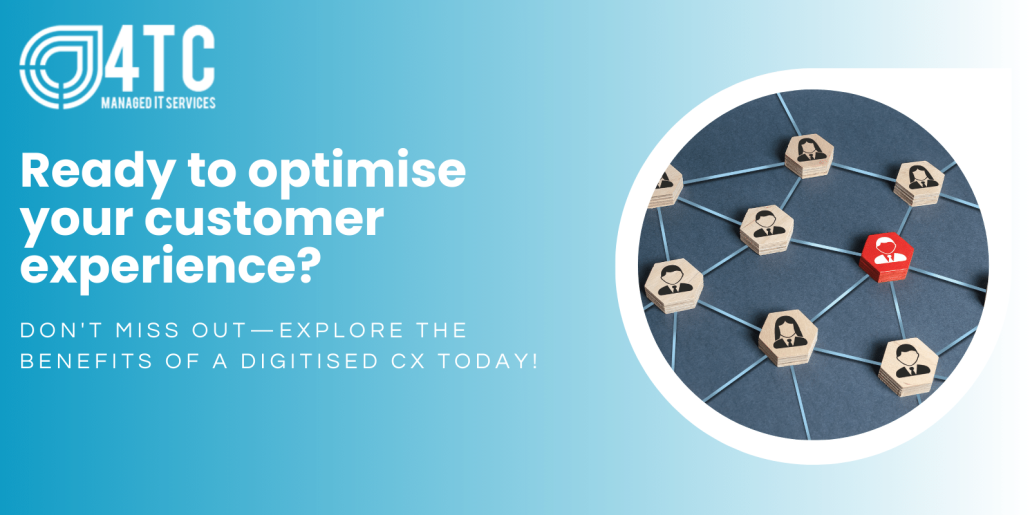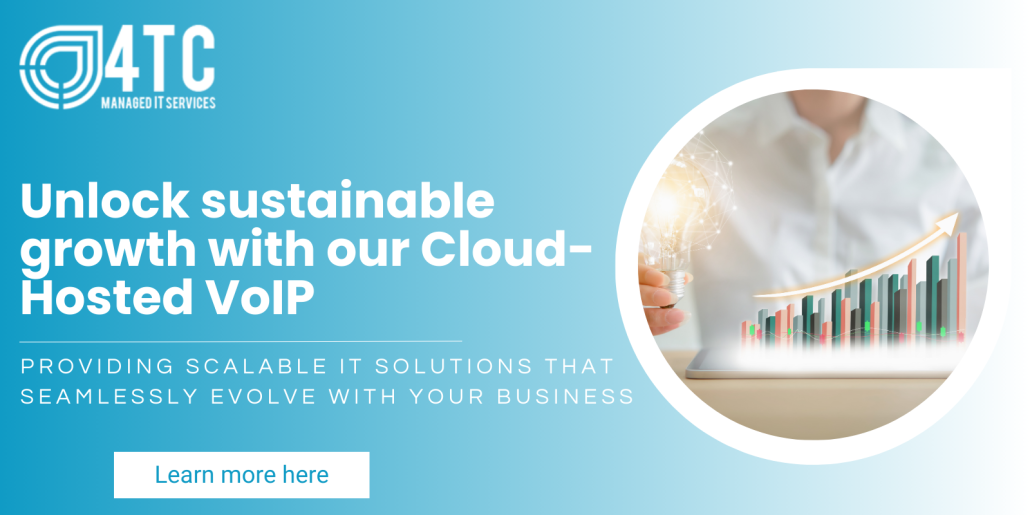Elevating Customer Experiences Through Technology – Harnessing IT for Better Customer Outcomes
In recent years, digitisation has been a key driver of revenue growth for many companies. Digital solutions have enabled businesses to better manage their sales pipelines, achieve more conversions, and offer their services in new and innovative ways. Today, there is greater focus than ever before on improving the customer experience through digitisation.
So why is that?
Building and maintaining an online presence has evolved from a ‘nice to have’ 20 or so years ago, to an absolute necessity for any business intent on growing in our digital age. Customers can now compare service offerings at the click of a mouse, with buyers basing their initial judgement of the business on the quality of the customer experience delivered to them. In many cases, this digital journey is the main distinguishing factor between rival products, so it’s vital to invest in it, and aim for consistent quality across every digital touchpoint.
Why is a Digitised Customer Experience Important?
A common misconception about customer experience is that customers always want a complaint, query, or issue handled by a ‘real person.’ While this is true for some individuals, and can prove the best course of action in some scenarios, today’s customers want choice, including the ability to self-serve. A digitised customer experience should therefore complement, rather than replace, traditional communication channels such as email and phone. This ‘omni-channel’ approach that combines employee-supported with independent, self-serve options gives customers control and flexibility over how they interact with your business, which in turn can support better customer satisfaction outcomes.
Customer Experience vs Customer Service – Understanding the Difference
Customer experience and customer service are associated concepts, but the two terms should not be used interchangeably.
Customer experience is used to define the engagements a customer has with your company between their initial contact and the close of a transaction. A good customer experience should aim to create an efficient, frictionless process that’s easy to navigate, and makes the prospective customer feel positive and supported.
Customer service steps in whenever a customer has an issue, query, or complaint, either during their customer journey or thereafter. Optimal customer satisfaction is achieved by investing strategically in both the customer experience and customer support functions. A digitised customer experience that functions well will support a seamless customer journey, and effective customer service channels will ensure there’s a friendly agent on hand to provide clarity and resolve minor issues.
In short, customer experience refers to an individual’s engagements with your brand on their journey to becoming a customer, while customer service refers to the support you provide if an issue or obstacle arises along the way.
Why Should You Invest in Your Customer Experience?
In the crowded digital marketplace, a first-rate customer experience will set your business apart from the competition. The quality, ease, and refinement of the customer journey can influence a prospect’s subconscious judgement of the underlying product or service; deliver a clunky, outdated experience, and the customer could lose faith in your offering.
Furthermore, customer expectations have never been higher. Today’s customers don’t want convoluted processes or communication channels with restricted hours of operation. Increasingly, there’s an expectation that the customer journey should be a near effortless experience, with a company’s digital infrastructure doing the ‘heavy lifting’ to facilitate this.
The experience your customers have is second in importance only to the quality of the service or product being provided. Provide an excellent customer journey, and you’ll benefit from high customer loyalty, enhanced brand reputation, and a greater chance of referrals.
The Role of Technology in The Customer Experience
Digital solutions can support a better customer experience in a number of key ways:
Automation and Self-Service Options
Customers don’t always want agent-assisted service or support. For many, there is satisfaction to be found in self-service; for others, there’s a desire to avoid the dreaded ‘on hold music,’ as it is passed between departments on lengthy phone calls. Self-service solutions allow prospects to take ownership of their customer journey, and in some instances, this can expedite the customer experience overall. Online forms, document upload portals, FAQ pages, and even video tutorials, are a great way incorporate self-service elements into your customer experience.
Automation is another technology that can be leveraged to deliver a smoother experience. One example of this is the use of automated appointment scheduling systems. These allow customers or prospects to view availability in real-time and choose an appointment time that suits their schedule. Once a time is selected and booked in, the system can be programmed to issue confirmations and reminders to the customer, as well as provide options for cancellation and rescheduling to further enhance convenience. Automation that’s well integrated into the customer experience can deliver a wide range of benefits, including reduced human errors, greater convenience, faster processes, and a reduced burden on the company’s staff.
Slick Customer Support
Sometimes it’s necessary to provide customer support to help a prospect transition from one stage of their customer journey to the next.
Thanks to intelligent digital applications, technology can now play a pivotal role in customer support, helping customers get their questions answered and problems resolved with minimal hassle.
AI powered chatbots serve as a useful example of such technology in action. These powerful applications use natural language processing to interact with customers in real-time, and deliver relevant, insightful information about the product or service in question.
A Tailored Experience
Customers today increasingly expect an individualised, tailored customer experience, one where their needs and desires are assessed and catered for in every interaction. Personalised recommendations based on factors like browsing history and preferences are one of the ways technology can deliver an individualised customer journey. Recommendations can help users identify the product or service best suited to their needs, and reduce the time spent sifting through product or service menus.
By providing a tailored experience, you can save your customers time and deliver a journey that is centred around the individual, resulting in better satisfaction outcomes.
In Summary
From initial contact to closing a sale, customers now expect a trouble-free, encumbered experience from beginning to end. A well-conceived, digitised customer experience can make all the difference when it comes to building brand loyalty, improving retention, and enhancing conversion rates. By investing in customer experience technologies today, you’ll give your business a solid foundation for growth, one that’s based on high satisfaction levels and a commitment to customer-centric service.
Up next, we look at 7 essential technologies for enhancing the customer experience.
4TC Services – Managed IT, Support, and Solutions for London Businesses
Secure, reliable, and tailored IT is a pre-requisite for success in our digital age. Here at 4TC, our mission is to help businesses across London and the Southeast realise their untapped potential using technology. From IT management that minimises downtime, to custom solutions that address persistent operational challenges, we can help you harness technology to grow and deliver the best possible outcomes for your customers.
To find out more, get in touch with 4TC today. We’d love to hear from you, and help you overcome your IT challenges.







